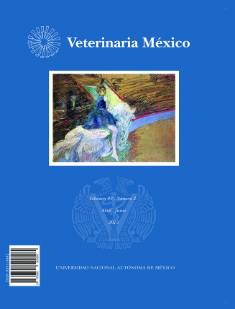Potential use of near infrared reflectance spectroscopy (NIRS) for the identification of beef, llama and horse jerky
Main Article Content
Abstract
Visible and near infrared reflectance spectroscopy (VIS/NIRS) was evaluated as a tool to discriminate jerky from different species. Spectra were taken by reflectance in a NIRSystems 6500 monochromator and the software NIRS 3.0 and WinIsi II Version 1.02A were used. Twenty samples of jerky corresponding to beef, llama and horses, respectively, were ground, homogenized and analyzed spectrally. The regression equations (PLS) were developed testing different mathematical treatments. The results for jerky show that NIRS can successfully discriminate 100% of llama, 95% of horses and 80% of beef samples, probably as a consequence of differences in intramuscular fat, protein and water contents of the different species. Thus, NIRS is a fast, inexpensive and non-destructive method that can be used to discriminate jerky from these species
Keywords:
Discrimination of Jerky Beef Llama Horses NIRS
Article Details
License

Veterinaria México OA by Facultad de Medicina Veterinaria y Zootecnia - Universidad Nacional Autónoma de México is licensed under a Creative Commons Attribution 4.0 International Licence.
Based on a work at http://www.revistas.unam.mx
- All articles in Veterinaria México OA re published under the Creative Commons Attribution 4.0 Unported (CC-BY 4.0). With this license, authors retain copyright but allow any user to share, copy, distribute, transmit, adapt and make commercial use of the work, without needing to provide additional permission as long as appropriate attribution is made to the original author or source.
- By using this license, all Veterinaria México OAarticles meet or exceed all funder and institutional requirements for being considered Open Access.
- Authors cannot use copyrighted material within their article unless that material has also been made available under a similarly liberal license.



